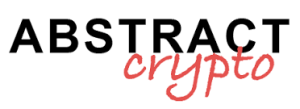Plasma announced on October 22 that it is expanding into Europe to build a regulated global stablecoin payments network thanks to a VASP license obtained in Amsterdam.
How does the plasma network license change Plasma’s European strategy?
What did the VASP approval and Amsterdam office mean for the company?
Plasma said the VASP license underpins immediate compliance for digital asset services and anchors its local presence in the Netherlands fintech hub. The announcement named Jacob Wittman, Adam Jacobs and Lidia Yadlos as leaders overseeing the Amsterdam operations.
The company positioned the Amsterdam office as a gateway to EU markets and a base to engage banks and payment processors. It also cited network liquidity and scale targets, noting a launch TVL figure of $2.5 billion and product waitlist milestones in its statement.
Will a VASP authorization speed a regulated payments network?
Which licences is Plasma pursuing and why?
Plasma is pursuing a MiCA VASP authorization and an EMI license Europe to combine crypto custody and fiat payment rails under a single compliance framework. A VASP authorization under MiCA would cover custody and exchange services, while an EMI licence would enable electronic money issuance and card services in regulated corridors.
The dual‑licence approach aims to reduce fragmentation for partners and to enable direct euro settlement with incumbent payment systems. For context on MiCA’s scope and design, regulators provide guidance on digital‑asset service authorisations (EU MiCA information).
Can a stablecoin neobank with zero fee transfers attract users?
What products will the regulated stablecoin payments network offer?
Plasma plans a suite that includes a stablecoin neobank card and zero fee transfers for on‑ and off‑ramp flows, positioning the offering as a regulated alternative for merchant settlement and consumer payments.
The company says these features will sit on top of its Layer‑1 stablecoin infrastructure to shorten settlement and lower costs.
Implementation timelines and granular market rollout specifics were not disclosed in the announcement and remain subject to regulatory approvals.
In our experience with payment processors and incumbent banks, securing a VASP licence is often the necessary first step to unlock correspondent banking relationships and reduce treasury friction for euro flows. Demonstrating robust liquidity management and governance in line with MiCA guidance is frequently decisive for integration, as highlighted by regulatory commentary from ESMA.
In brief, Plasma’s VASP licence and Amsterdam hub signal a regulation‑first strategy as the company seeks MiCA VASP and EMI approvals to mainstream stablecoin payments and regulated neobank services.


